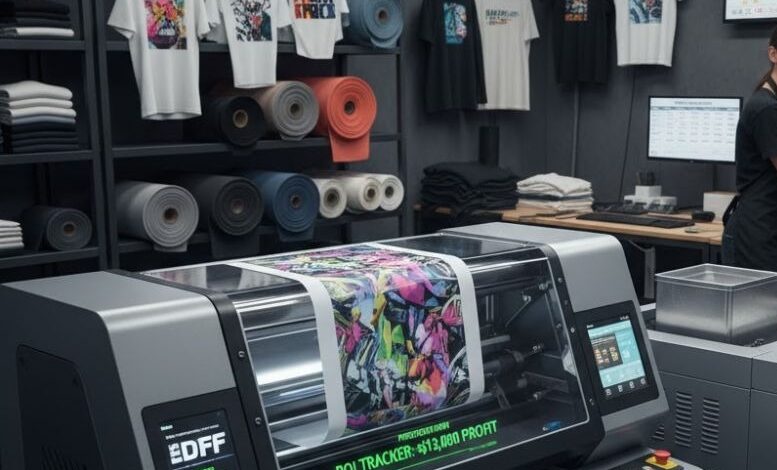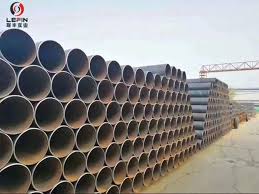DTF Printer Cost vs. ROI: What Commercial Buyers Need to Know in 2026

Direct-to-Film (DTF) printing has become the preferred technology for small and mid-sized businesses in the United States, and within the custom apparel industry, which is known for its dynamic nature, has been the choice for DTF in a very short time. If you have a local printing store, an online brand, or you are venturing into the production of custom merchandise, you need to know the cost of the DTF printer against the return before investing.
DTF has improved considerably with the arrival of 2026, and the future looks brighter with added automation, faster print speeds, and better inks. However, it is still challenging to figure out which of the numerous DTF printer models, which range in price from $3,000 to $30,000, offer the best value for money. This blog helps
1. What Exactly Is DTF Printing?
U.S. commercial buyers to easily navigate through the maze of DTF printer costs, ROI, and the wise purchase that leads to a profit increase rather than just production.
For novices of the technology, DTF means Direct-to-Film, a method that involves printing your design on a particular PET film, melting an adhesive powder of heat-activated type on the print, and fabricating the ink into fabric with a heat press.
Compared to Direct-to-Garment (DTG) printing, which needs pre-treatment and is only effective on cotton, DTF is capable of printing on any fabric, such as cotton, polyester, nylon, fleece, leather, and blends. In other words, the user gains more flexibility and fewer workflow restrictions.
This versatility is what new business opportunities in the US market mean, such as uniforms, custom merch, sportswear, tote bags, caps, and even specialty fabrics. In short, DTF expands what you can offer, and that’s the foundation of ROI.
2. DTF Printer Costs in 2026: What You’ll Pay Upfront
The cost of a DTF printer varies widely based on size, speed, and level of automation. Here’s a quick breakdown for 2026:
Entry-Level Printers: $2,500 – $6,000
With a desktop DTF printer of this category, small shops or newly launched businesses can easily manage products of A3/A2 sizes. They are excellent for short runs, market testing, or producing custom-made orders.
- Pros: Affordable, compact, low learning curve
- Cons: Lower printing speed, need for manual powder application, and smaller film dimensions
Mid-Range Printers: $7,000 – $15,000
The best choice for companies with an average, constant number of orders. Moreover, these printers typically come complete with such features as automatic circulation of white ink, built-in shaker, and upgraded RIP software.
- Pros: Pretty good speed, color stability, part-automated work process
- Cons: More space and a professional are required for the setup
Industrial Printers: $20,000 – $30,000+
They are machines for mass commercial production of large-format products and have the advantage of simultaneous multiple prints, automated film feeding/powdering/curing systems, etc.
- Pros: Fastest speed, the most stable, production-ready
- Cons: More money is required at first, and more complex maintenance
If you think about the purchase, you’ll find that you’re not only acquiring a printer; instead, you’re investing in a whole printing ecosystem that consists of the printer itself, a curing oven or heat press, a powder shaker, RIP software, and consumables (film, powder, ink).
3. Hidden and Ongoing Costs to Consider
While printer price tags are easy to compare, the ongoing costs will determine your true ROI. Here’s what to factor in:
Inks
DTF inks, especially white ink, are your most frequent expense. Expect to pay around $80–$120 per liter for quality ink. Premium white ink is essential to avoid clogging and ensure durability.
Transfer Film
High-quality PET film costs about $0.20–$0.40 per sheet (A3 size) or $0.30–$0.50 per square foot in roll format. Using cheaper film can cause smudging, inconsistent transfers, or peeling issues.
Adhesive Powder
A must-have for every print, this heat-activated powder costs around $25–$40 per kilogram, depending on quality.
Maintenance Supplies
Include cleaning solutions, swabs, and replacement printheads in your cost projections. Proper maintenance ensures consistent results and extends printer life.
Labor & Utilities
Even with automation, someone must operate the printer, prep designs, and handle curing. Consider hourly labor costs plus electricity usage, especially for conveyor ovens.
When you tally all these, your average cost per t-shirt print typically ranges from $1.25 to $2.50, depending on print size and material.
4. Calculating ROI: When Does the Printer Pay for Itself?
Now for the big question: how long before your DTF printer starts turning a profit?
Let’s use a conservative example for a small-to-mid-sized shop:
- Printer Investment: $10,000
- Average Cost per Print: $2.00 (ink, film, powder, labor)
- Average Selling Price: $15.00 per shirt
- Profit per Shirt: $13.00
If you sell 800 shirts, you’ve already covered your printer investment. That’s achievable in two to three months for most small businesses doing steady local or online sales.
After that, every shirt sold contributes directly to your bottom line. Many U.S. print shops report ROI periods as short as 60–90 days once production ramps up.
5. Why DTF Printing Offers Better ROI than DTG or Screen Printing
For many commercial buyers, the switch from DTG or screen printing to DTF is driven by efficiency and profitability. Here’s why DTF consistently wins the ROI race:
No Pre-Treatment
DTF doesn’t require pre-treating garments, saving time, chemicals, and labor.
Print on Any Fabric
You can fulfill more orders from cotton tees to performance wear with one printer. That means less equipment and higher versatility.
Reduced Maintenance Downtime
DTF printers with auto-cleaning heads and white-ink recirculation drastically cut downtime and waste.
Batch Printing Capabilities
You can print multiple transfers ahead of time and press them later, ideal for managing rush orders or busy seasons.
Consistent, Long-Lasting Quality
DTF prints resist cracking, fading, and peeling, ensuring happier customers and repeat orders.
The result? Lower costs, more flexibility, and a faster payback period.
6. Maximizing ROI: Smart Buying and Operating Tips
Buying the right printer is only step one. To maximize returns, focus on smart operations and consistent quality.
a. Invest in Training
Even the best printer performs poorly without proper operation. Ask your supplier for onboarding or video tutorials to shorten the learning curve.
b. Buy Quality Consumables
Cheap ink and film can damage your printer and ruin prints. Stick to reputable U.S. suppliers offering compatible, tested materials.
c. Automate When Possible
Automated powder shakers and curing units save hours of manual labor. Time is money. Automation improves consistency and scalability.
d. Track Your Costs
Monitor your ink and film consumption regularly. A simple spreadsheet can help you calculate real-time margins and adjust prices when necessary.
e. Offer Customization Packages
Boost profits by offering bundle deals, for example, custom shirts, hoodies, and tote bags. DTF makes product diversification easy.
7. The U.S. Market Outlook for 2026
According to the forecast, the DTF print market in the U.S. will still be up by more than 15% year-over-year in 2026. The need for on-demand apparel has never been greater, especially since local and online customization have become the hottest trend.
Small businesses, Etsy sellers, and boutique brands have been increasingly relying on DTF printers as they offer the perfect combination of speed, versatility, and affordability that no other technology can match.
It does not matter if you are printing for local sports teams, company merch, or online stores; DTF printing allows you to be the first one to market with the latest trend while at the same time keeping your costs down.
Final Thoughts
This is an investment that can grow in size or scope while still yielding high returns. The initial costs might vary, but the return on investment for a long period will be unparalleled.
A single well-selected DTF printer will allow you to print on almost any fabric, save time when the machine is not working, and increase the amount of your profits considerably. The mix of low running costs, quality of the prints, and speed of the turnaround makes the DTF a very attractive solution for any commercial garment producer in 2026.
To sum up: In the case that you are committed to expanding your printing business, the investment in DTF printers of sound quality made today would be able to pay for itself in a few months and continue giving you profits for the future years.




